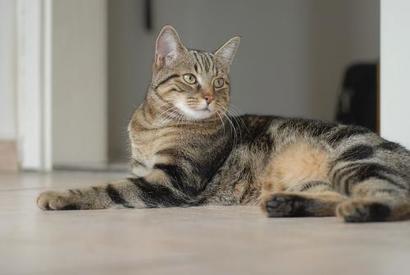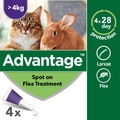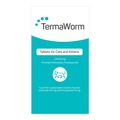
Otherwise known as the ‘British Shorthair,’ the breed’s origin is uncertain. It is thought that cats owned by the Romans - utilised in vermin control and hunting - went on to breed with feral European cats, whose offspring became the foundation stock of the European Shorthair. It is likely these native cats were tabby, as the Shorthair boasts similar coat markings. Due to a lack of breeding stock, the European Shorthair was progressively bred with the Persian during World War I, something which accounts for its distinctively ‘squashed’ facial appearance. The European Shorthair was officially recognised by the Cat Fancier’s Association in 1980 and by the International Cat Association a year earlier.
Described as a ‘round’ cat in appearance and structure, the European Shorthair possesses a stocky build, with a broad chest, a short tail, small, rounded ears and short legs. Its shape is both distinctive and endearing, and its bright, round eyes are often likened to those of the Cheshire Cat. The eye colour usually corresponds to the coat colour. Even the tail is partially rounded at the tip and its rounded face and short nose reflects characteristics of the Persian. The European Shorthair has a short and manageable coat that requires minimal grooming. All colour variations and patternings are permissible.
Great variations are seen in terms of temperament and behaviour when it comes to the European Shorthair. The majority of these cats adapt well to domestic living, preferring to be housed indoors where they are better protected from harm, disease and theft. Generally speaking, these cats are bold, playful and affectionate, and are highly compatible with children and dogs. An intelligent and laid-back breed that forms strong attachments to human individuals and displays indifference towards strangers. On average, an adult European Shorthair will weigh in the region of 8-15 pounds, with a typical life expectancy of 15-20 years.
In general, the European Shorthair is a notoriously healthy and resilient cat breed with a long life expectancy. It is however, prone to certain health afflictions, including hypertophic cardiomyopathy – a very common type of heart disease, as well as haemophilia B. If over-fed, the Shorthair will gain weight easily, so always ensure a balanced diet.








From Glos, United Kingdom
independent, lovable, very chatty and let's us live in his house!!!
From Rhondda Cynon Taff, United Kingdom
I have had very many 'moggies' in my life, they are really great cats. All have their own characters, little funny ways, etc., but all of them do a good job of living with us humans - and other cats. We had, at one time, 9 cats and 2 dogs, and every one of them got on well together. Can't have a dog now as I can't walk more that a few yards. I found that the cats we have had found their own level in the 'family, and took different times to really settle in. I find that it is best to let the cats adjust to the house/family/humans in their own time, but giving them some time for cuddles and petting during the day helps them to settle in a bit quicker.